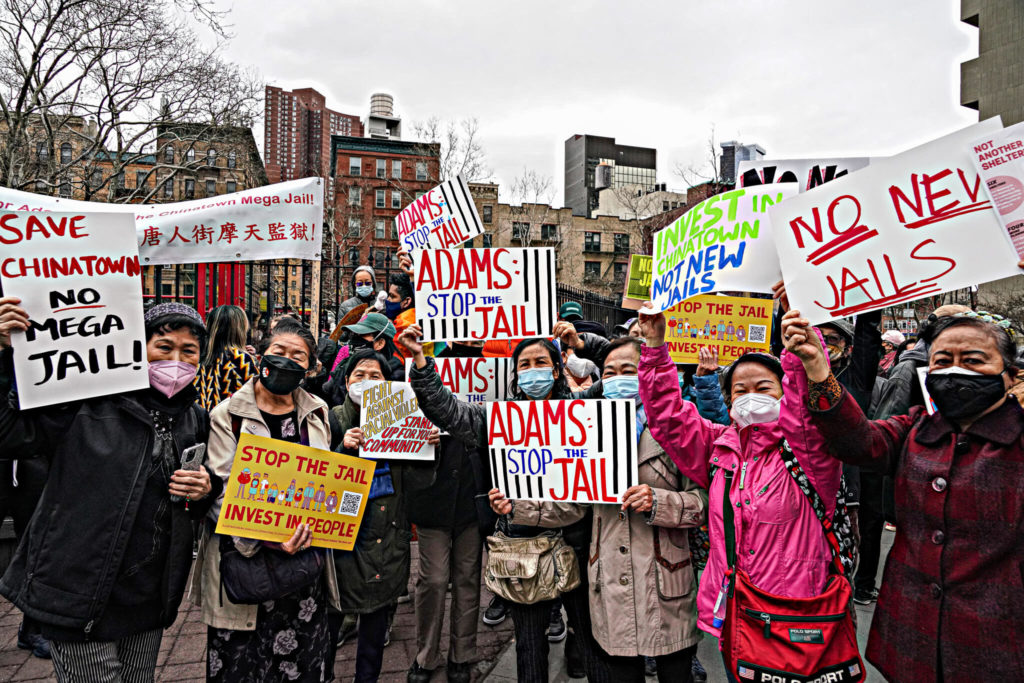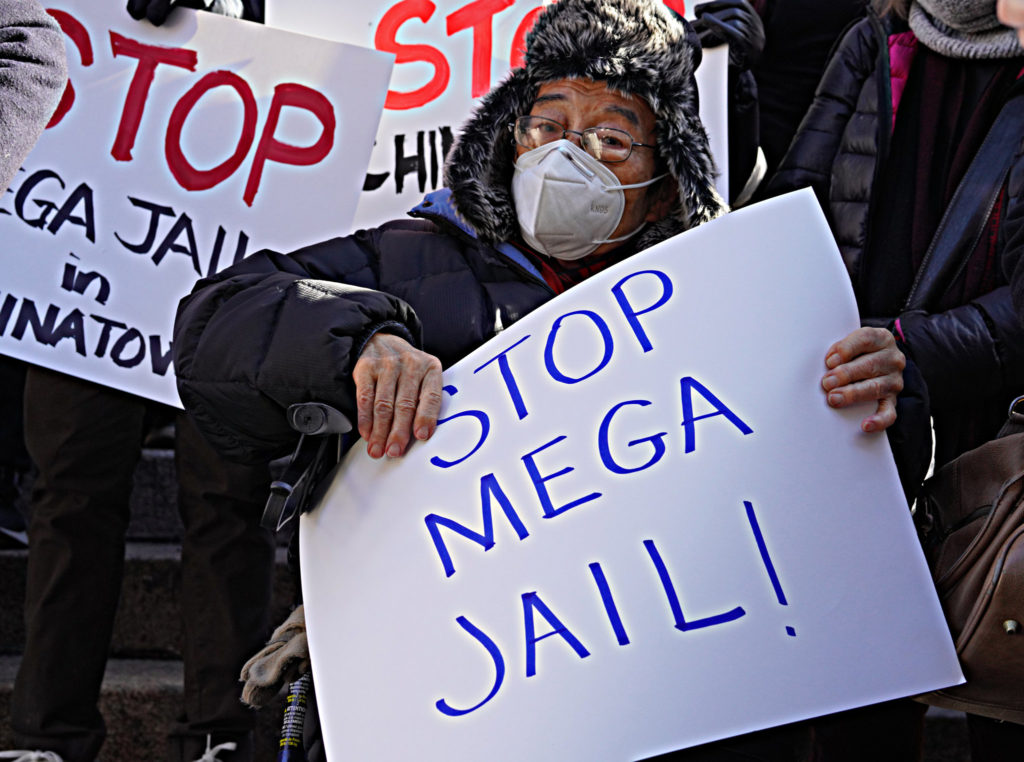
The United States likes to present itself as “the best country in the world” but the only thing they are best at is incarcerating individuals. Over the last fifty years, the United States carceral system has expanded dramatically. It incarcerates a large proportion of its population, more than any other country in the modern world. This carceral crisis in the US targets the poor, people of color, and increasingly, women.
The US has pumped billions into the carceral system including funding the police state, sustaining carceral establishments such as jails, prisons and immigrant detention centers, and building new ones. Much like the proposed “megajail” that will be built in the Chinatown neighborhood of Manhattan, New York.
The community-based organization Welcome to Chinatown reports that the Chinatown megajail project is estimated to cost $8.3 billion and that its construction would last for five years, ending in 2027. On March 20, 2022, two thousand protestors showed up to the proposed site of construction to rally against the project and its devastating consequences for Chinatown and its people.
In his campaign, Mayor Eric Adams promised to close Rikers and build other, “humane” jails, to create borough-based prisons instead. It must be noted that the city and Adams have plans to build new jails in all of the New York City boroughs, except for Staten Island. In April 2021, when Adams was still a candidate for mayor, he declared that he opposed the construction of the jail from Mayor Bill de Blasio’s administration. However, as mayor, he approved the project and its $8.3 billion budget.
With the construction of the megajail, the city and its leaders are once again proving that they have never cared about the dignity nor affirmed the humanity of Chinatown’s residents, majority of whom are Chinese American-Asian American, elderly, working class, and families. Aside from the initial demolition, the construction of the jail will negatively impact the neighborhood’s small businesses and restaurants that are already struggling through the pandemic and the rise of Anti-Asian hate and racism in recent months.
Abolition scholars and activists and scholars such as Assata Shakur and Julia Sudbury have pointed out that building jails is more profitable than investing in care institutions, such as schools, hospitals, and community centers. The lack of care institutions and social safety nets also pushes people into the carceral system, so the system fulfills its purpose by neglecting its citizens.
Protests against the building of the megajail have been ongoing and I turn towards two movements that have helped increase the movement’s visibility and urgency. After the summer of 2020, during which protests across the US sparked after the death of George Floyd at the hands of police brutality, the rise of the Defund the Police and No New Jails followed. Another breakpoint that followed as the rise of Anti-Asian hate and explicit violence due to the fake news connecting Asians (East Asians in particular) to the origin and spread of COVID-19, which was also spurred by the racist former president Donald Trump. These two moments contributed to the resistance and organizing of the Chinatown community (and Asian American individuals and communities around the country) against the megajail.
There has been a dramatic and alarming increase in anti-Asian violence ranging from verbal abuse casually stated towards Asian individuals, to attacking elderly Asians in Chinatown, to the shooting of 8 individuals, including 6 women of Asian descent, at a spa and wellness district in Atlanta, Georgia. However, these individual acts of violence do not stand by themselves. They are a part of a larger and more imbedded culture of systemic violence normalized against Asian Americans, which has hurt and marginalized our communities.
While the protests and mobilizations against the Chinatown megajail continue, it is important to keep our eyes on existing campaign efforts such as Welcome to Chinatown and the efforts of the community on social media. The construction of jails and the disruption and harming of communities is not an isolated case in Chinatown. I believe that continuing the discussion and fight against the carceral system is also the underlying mode of action we can currently do. There can be no liberation from Anti-Asian hate and the threat of the Chinatown megajail without the liberation of the incarcerated, those in poverty, and other communities of color.

(By Wella Lobaton)
(Photo Credit 1: AMNY The Villager / Dean Moses) (Photo Credit 2: AMNY The Villager / Dean Moses)